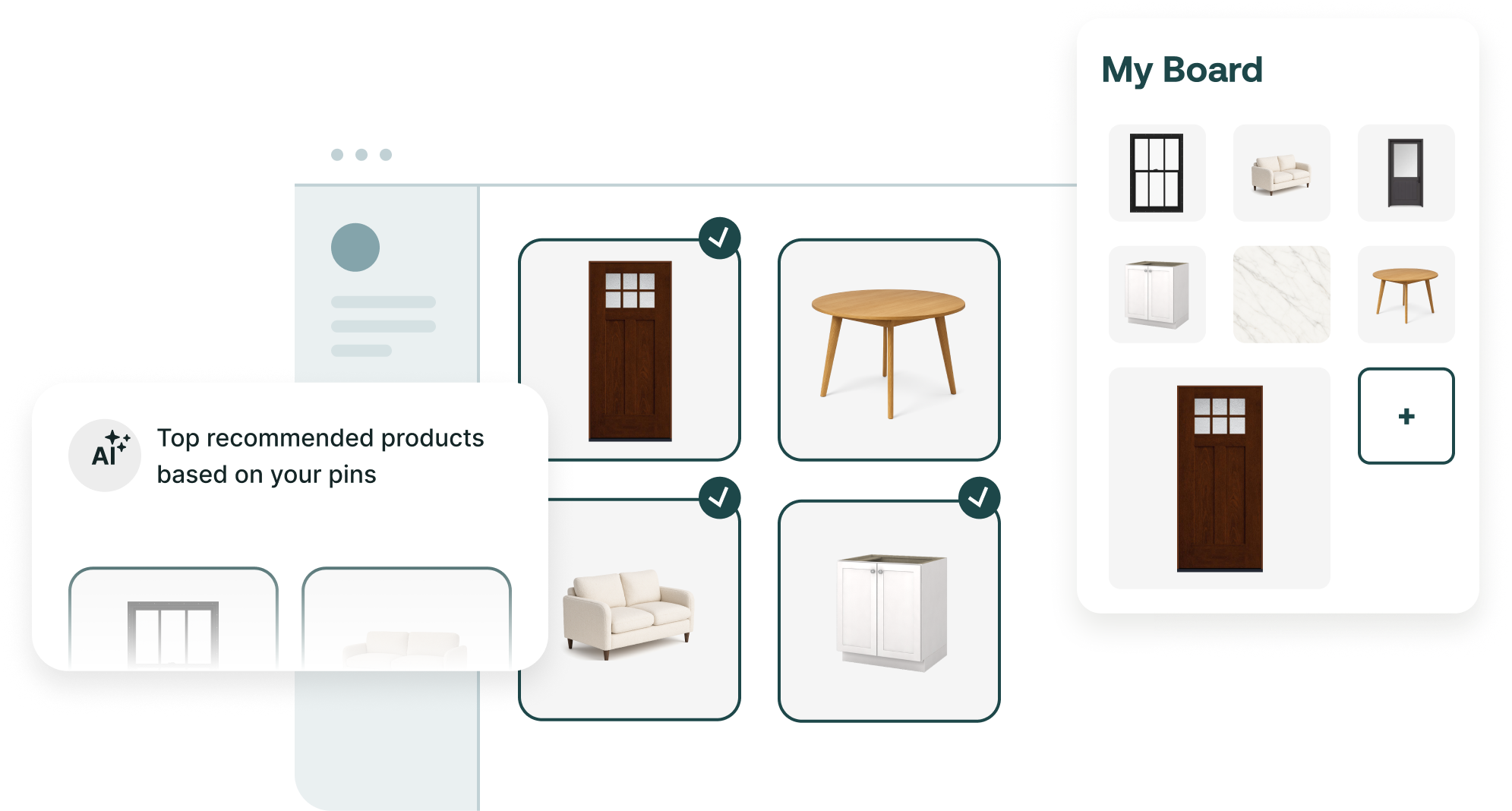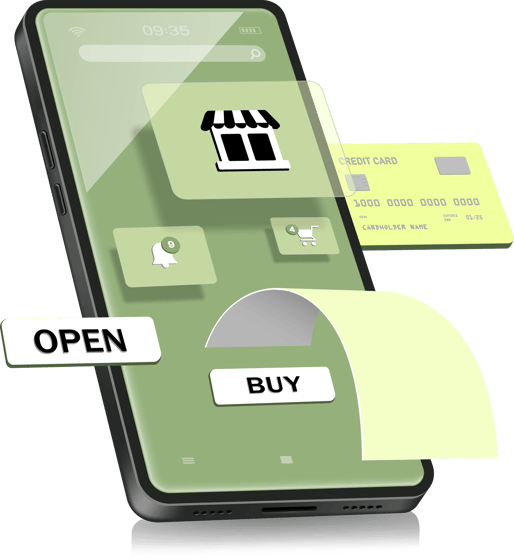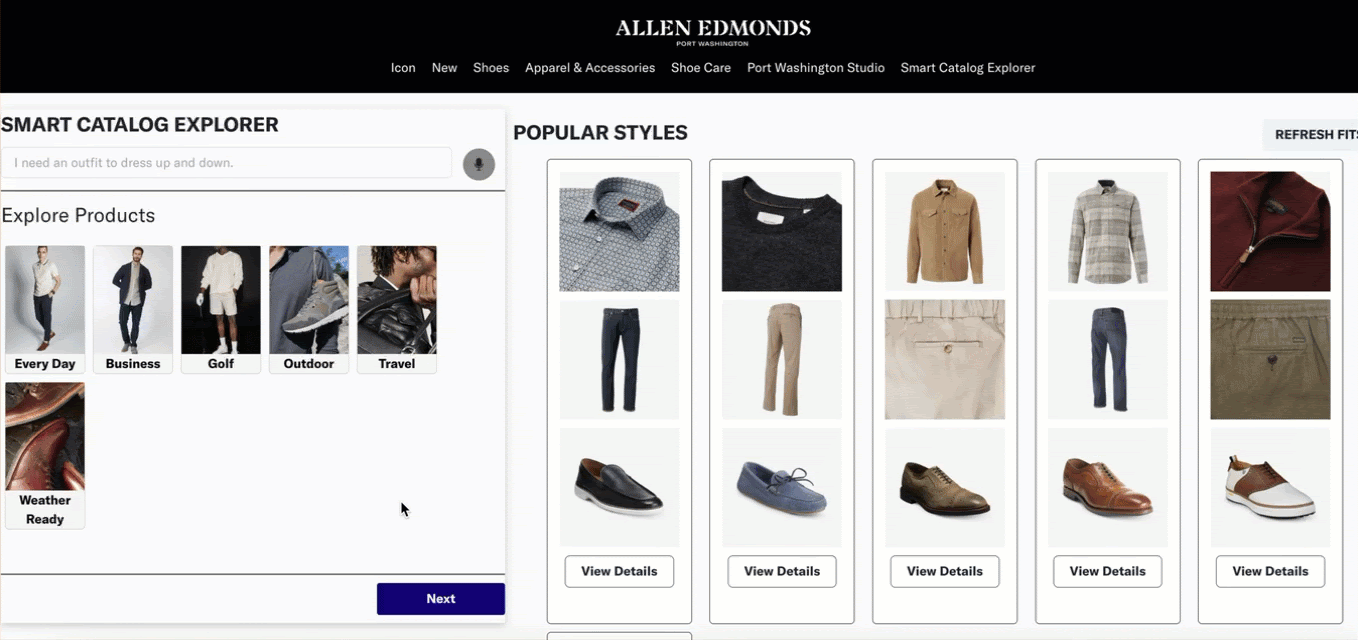The AI-Powered Buying Funnel: How Discovery, Guided Selling and Visualization Work Together
Modern selling success depends on three interconnected AI capabilities working together throughout the buyer journey. AI discovery helps shoppers find the right products through intelligent search and recommendations, and guided selling navigates customers through the decision process with personalized advice. Product visualization removes uncertainty by letting shoppers see what they're getting.
When these three components work in harmony, retailers see improvements in conversion rates, average order values, and customer satisfaction while reducing return rates.
The buying landscape has changed. Simply having products online isn't enough. Customers expect intelligent, personalized experiences that guide them from an initial interest to a confident purchase.
At Threekit, we've watched this transformation firsthand, and the most successful retailers are those who understand how AI-powered discovery, guided selling, and visualization work together as a cohesive system rather than isolated tools.
The data tells us the story.
According to Grandview research, the global artificial intelligence in retail market reached $11.61 billion in 2024, and it is projected to grow to $40.74 billion by 2030, reflecting a shift in retailer approach. But this investment is about more than adopting technology for its own sake. It's about fundamentally reimagining how we help customers find, evaluate, and purchase products.

Understanding the Modern Buyer Journey
Before diving into how AI transforms retail, we need to understand the modern buyer journey. It's no longer a straightforward process from viewing an item to making a purchase. Today's customers bounce between channels, research extensively, and expect personalized guidance throughout the process.
The traditional funnel model (awareness, consideration, decision) exists, but the lines between stages have blurred. A customer might discover a product on social media, research it on their phone during lunch, compare options on their desktop at night, and finally purchase on their tablet the next morning. Each of these micro-moments presents an opportunity for AI to provide value, but only if the technology works across the entire journey.
Stage 1
AI Discovery: Finding What You Never Knew You Needed
The journey begins with discovery, where AI proves its worth. Think about walking into a physical store where an expert salesperson somehow knows exactly what you're looking for before you even explain it. That's what AI discovery does at scale online.
AI-powered search and recommendation engines analyze vast amounts of data, including browsing patterns, purchase history, similar customer behaviors, and seasonal trends, to surface products that genuinely match what each shopper needs.
But AI discovery goes beyond simple product matching. At this stage, machine learning algorithms identify signals that humans might miss. When a customer lingers on certain product attributes, clicks through specific categories, or searches for particular features, the system learns and adapts. It understands whether someone is browsing for inspiration or ready to buy, whether they're price-sensitive or value-focused, whether they're shopping for themselves or as a gift.
The practical applications are everywhere. When a customer searches for "running shoes," AI discovery doesn't just show running shoes. It considers their past purchases (have they bought athletic gear before?), their browsing context (are they looking at marathon training content?), and their engagement patterns to prioritize results. Maybe they need trail running shoes based on their location and browsing history, or perhaps they're beginners who'd benefit from cushioned training shoes. AI makes these distinctions automatically.
Stage 2
Guided Selling: Navigating Complexity with Confidence
Once discovery has done its job and customers are exploring specific products, they enter the consideration phase. This is where guided selling becomes important. Many products, especially customizable items, overwhelm customers with choices. Should you get the leather or fabric sofa? What processor speed do you actually need? Which features justify the price difference?
Guided selling AI acts as a digital sales consultant, asking the right questions and making intelligent recommendations based on customer needs rather than pushing the highest-margin item. This technology understands product attributes, customer preferences, and optimal matching between the two.
At Threekit, we've seen how this transforms the shopping experience, especially for categories where expertise traditionally made the difference between a satisfied customer and a return.
The power of guided selling is its ability to handle complexity while maintaining simplicity. For example, when configuring a custom product with dozens of potential options, the AI can narrow choices based on previous answers, hiding irrelevant options and highlighting compatible combinations. It might ask, "What's your primary use case?" and then tailor the subsequent questions and recommendations accordingly.
Guided selling also excels at upselling and cross-selling in contextually appropriate ways. Instead of blindly suggesting add-ons, the AI understands what complements a customer's specific need. When someone buys a high-end camera, they likely need memory cards and a bag, but the system recommends professional-grade accessories instead of entry-level ones. This specificity is what separates effective guided selling from annoying spam.
Stage 3: Visualization – Seeing Is Believing
Even with perfect discovery and expert guidance, one massive challenge remains in online retail: customers can't physically touch, see, or experience products before buying. This uncertainty drives much of the hesitation and returns that plague eCommerce.
According to the Baymard Institute, the average cart abandonment rate reaches 70.22%. This is why product visualization technology is the final piece. High-quality 3D visualization, augmented reality views, and interactive product configurators bridge the gap between online browsing and in-store experience. When customers can see exactly what they're getting, in their space, with their chosen options, from every angle, it raises confidence and alleviates doubt.
The impact on return rates is particularly dramatic. The average return rate for eCommerce was 16.9% in 2024, representing $890 billion in returned merchandise (National Retail Federation). But when customers can visualize products accurately before purchase, these returns decrease significantly. Someone who can place a virtual sofa in their living room using AR is far less likely to be surprised by size or style when it arrives.
eCommerce no longer relies on static photos. Now, retailers can use 360-degree views, zoom capabilities that reveal texture and detail, real-time configuration updates, and even AI-powered styling suggestions to assist customers. For furniture and home goods, AR placement tools let customers see items in their actual space through their phone camera. For fashion, virtual try-on technology simulates fit and appearance on different body types.
At Threekit, we've developed visualization tools that integrate with guided selling. As customers make configuration choices, they immediately see those changes reflected in photorealistic 3D renderings. This instant visual feedback provides customers with confidence, creating an engaging and interactive experience that encourages them to move forward rather than abandon their carts.
How These Three Components Work Together
The real magic happens when discovery, guided selling, and visualization operate together rather than as separate tools. Each tool amplifies the others, guiding the customer from initial interest to confident purchase.
Here's how it works in practice. A customer arrives on an eCommerce site with a vague need: "I need a new office chair." AI discovery recognizes this intent and surfaces relevant options while gathering contextual signals. The system notices they're viewing ergonomic models and reading about back support, indicating this is an important consideration.
As they click on a promising chair, guided selling takes over. Rather than drowning them in specifications, it asks targeted questions: "How many hours do you sit daily?" "Do you have any back issues?" "What's your height?" Based on their answers, it narrows options and highlights key features that matter for their specific situation.
Throughout this process, visualization lets them see exactly what they're considering. They can rotate the chair, zoom in on mesh material, view it in different colors, and even place a virtual version in their office using their phone. Each customization option they select through guided selling immediately updates the visualization, helping create a confident, informed decision.
The Business Impact: Real Numbers, Real Results
The financial impact of getting this right is substantial. NVIDIA reports that 69% of retailers using AI agents report revenue growth that is likely due to personalized shopping experiences. But beyond top-line revenue growth, we see improvements across multiple metrics that matter.

Conversion rates see dramatic increases when these three capabilities work together. Customers who engage with guided selling and visualization convert at rates far exceeding those who simply browse static product pages. They're more confident in their decisions, which translates to more completed purchases.
Average order value climbs as well. When customers can see premium features visualized and understand their benefits through guided selling, they more readily select higher-end options and relevant add-ons.
Perhaps most importantly, return rates decline significantly. When customers know exactly what they're getting because they've visualized it accurately and received expert guidance, the chances of disappointment plummet.
Implementing the AI-Powered Funnel: What Retailers Need to Know
For retailers considering this integrated approach, several key factors determine success. First, data quality matters immensely. AI systems require clean, comprehensive product data, including accurate specifications, proper categorization, high-quality images, and detailed attribute information. The better your product data, the smarter your AI becomes.
Second, these systems improve over time through machine learning. Initial implementation is just the beginning. As the AI observes customer behavior, purchase patterns, and outcomes, it refines its recommendations, questions, and prioritization. This means committing to continuous optimization rather than setting it and forgetting about it.
Third, the human touch remains important. AI should assist rather than replace human expertise. The best implementations blend AI capabilities with the ability to connect with human advisors when needed. Sometimes, customers want emotional reassurance or creative guidance that technology can't fully provide.
Finally, measurement and iteration are important. Track key metrics across the funnel, including engagement rates, conversion rates, average order values, return rates, and customer satisfaction scores. Identify where customers struggle or abandon, and refine the AI's approach in those areas. Over 70% of retail executives already use AI tools to speed up decision-making, and those who succeed are those who treat AI as a continuously evolving capability rather than a fixed solution (Honeywell and Wakefield).
Looking Ahead: The Future of AI-Powered Retail
AI will become even more sophisticated at understanding customer intent, providing guidance, and creating immersive experiences. We're already seeing early applications of generative AI that can create product descriptions, suggest styling combinations, and even generate custom product variations based on customer preferences.
Adobe reports a 1,950% year-over-year increase in retail site traffic from chat interactions during 2024's Cyber Monday,. This data suggests that customers are rapidly embracing AI-powered shopping experiences. The retailers who thrive will be those who view AI not as a cost center or technical experiment, but as the foundation of customer experience strategy.

At Threekit, we're committed to pushing these boundaries. We believe that creating experiences where technology fades into the background, guiding customers to products they love, is the future of retail. When discovery, guided selling, and visualization work together, shopping becomes less about searching and more about discovering, less about guessing and more about knowing, less about hoping and more about confidence.
The AI-powered retail funnel isn't coming. It's already here. The question for retailers is no longer whether to adopt these capabilities, but how quickly they can implement them effectively. Because in an increasingly competitive landscape where customer expectations continue rising, the retailers who provide intelligent, personalized, confidence-building experiences will be the ones who win.
Sources:
- Honeywell and Wakefield - https://www.honeywell.com/us/en/news/featured-stories/2025/08/impact-of-ai-and-data-collection-on-retail-transformation
- Grand View Research - Artificial Intelligence In Retail Market Size Report: https://www.grandviewresearch.com/industry-analysis/ai-retail-market-report
- EComposer - AI in eCommerce Statistics 2025: https://ecomposer.io/blogs/ecommerce/ai-in-ecommerce-statistics
- SellersCommerce - AI In ECommerce Statistics: https://www.sellerscommerce.com/blog/ai-in-ecommerce-statistics/
- IHL Group via Statista - AI and ML Impact on Retail Performance: https://www.statista.com/statistics/1453198/ai-and-ml-impact-on-retail-performance/
- Baymard Institute - Cart Abandonment Rate Statistics: https://baymard.com/lists/cart-abandonment-rate
- National Retail Federation - 2024 Retail Returns Report: https://nrf.com/media-center/press-releases/nrf-and-happy-returns-report-2024-retail-returns-total-890-billion
- Bold Metrics via Strategic AI Investments in Retail 2025: https://blog.boldmetrics.com/strategic-ai-investments-in-retail-2025-balancing-innovation-and-roi
- Oberlo - Average Order Value Statistics: https://www.oberlo.com/statistics/average-order-value
- Insider (Agent One) - AI in Retail 2025 Trends: https://useinsider.com/ai-retail-trends/
- All About AI - AI Agents Statistics: https://www.allaboutai.com/ai-agents/statistics/


